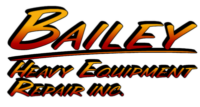Summer Storm Recovery: Emergency Heavy Equipment Repairs for Lexington’s Unpredictable Weather

Eastern Oregon’s summer storms are notorious for striking with little warning, transforming sunlit work zones into chaotic landscapes in minutes. Nowhere is this truer than in Lexington, a small but industrious town that serves as a hub for agricultural and construction operations. The region’s volatile summer weather can take a toll on critical machinery, often at the peak of demanding workloads. When a sudden deluge or windstorm damages vital equipment, downtime isn’t just inconvenient—it can halt entire operations. That’s where emergency heavy equipment repair becomes essential.
In this article, we’ll dive deep into how Lexington and surrounding areas of Eastern Oregon manage storm-induced mechanical crises. From immediate storm damage assessment to mobile heavy equipment repair services that operate 24/7, this blog will explore the rapid response strategies that keep work moving, even under the most unpredictable skies.
Lexington’s Weather: The Perfect Storm for Equipment Failure
Lexington, Oregon may enjoy its fair share of sunny days, but during the summer, the skies often betray expectations. Thunderstorms, flash floods, and high winds emerge with short notice, making the region’s heavy equipment especially vulnerable. Machines that are typically left outdoors—excavators, backhoes, bulldozers, and cranes—are suddenly pounded by torrential rain, blasted by debris-laden winds, or even struck by lightning.
Unlike milder regions where seasonal storms are predictable and gradual, Lexington’s atmospheric shifts can be violent and abrupt. This volatility increases the likelihood of emergency heavy machinery breakdown scenarios. Hydraulic failures, electronic malfunctions, and fuel system compromises are among the most common outcomes of storm-related wear and tear. For operators and project managers, quick and effective action is not optional—it’s a necessity.
Adding to the challenge is the region’s rural nature. With vast expanses of farmland and rugged terrain, it’s not always feasible—or timely—to haul broken machinery to a central repair facility. Instead, mobile heavy equipment repair in Oregon becomes a lifeline for many operations. When storms strike, it’s these agile services that ensure projects aren’t left in limbo.
The Role of Emergency Heavy Equipment Repair Services
Emergency heavy equipment repair services are the unsung heroes in Lexington’s storm recovery playbook. These teams are trained to respond to breakdowns at a moment’s notice, often traveling through storm-affected routes to reach remote job sites. Their toolkits include diagnostic software, welding rigs, hydraulic repair kits, and an arsenal of replacement parts, enabling them to perform most repairs on-site.
For Lexington, the importance of such mobile units can’t be overstated. A downed harvester during harvest season or a malfunctioning grader during a road repair project can mean thousands of dollars in lost productivity. Emergency heavy equipment repair teams mitigate these losses by restoring machinery functionality quickly, often working in less-than-ideal conditions—from muddy fields to debris-strewn construction sites.
These repair units also play a critical role in assessing whether equipment is safe to operate post-storm. Rather than risking further damage or operator injury, field technicians provide fast storm damage assessments of heavy equipment in Eastern Oregon. This means looking for water ingress in electrical panels, checking for wind-induced misalignment, and testing hydraulic pressure after exposure to extreme temperature changes. When minutes matter, their ability to diagnose and fix problems efficiently makes all the difference.
Mobile Repairs: The Backbone of Rural Resilience
While urban centers may benefit from proximity to large dealerships and service centers, Lexington leans heavily on mobile heavy equipment repair services in Oregon. These services act as traveling workshops, often operating from robust utility trucks that can handle both diagnostic and mechanical tasks. Given the distances and terrain involved, they are indispensable in restoring uptime quickly.
The best mobile services are not just reactive—they’re proactive. They maintain detailed logs of client equipment, allowing them to stock commonly needed parts and anticipate seasonal vulnerabilities. For instance, during storm season, they may carry extra alternators, starter motors, and seals to address the usual suspects in summer breakdowns. Some even offer real-time communication through GPS-enabled tracking and text updates so project managers are never left in the dark about repair timelines.
Lexington’s industries—whether agriculture, road construction, or timber—rely on these services for their speed and versatility. Many mobile heavy equipment repair companies have partnerships with OEMs (original equipment manufacturers), enabling them to perform warranty repairs on the spot. This blend of speed, skill, and logistical savvy empowers Eastern Oregon’s workforce to rebound from storms with minimal lag time.
Storm Damage Assessment: More Than Just a Quick Fix
Storm damage assessment for heavy equipment in Eastern Oregon goes beyond simply checking if a machine will start. It’s a systematic process involving visual inspections, operational testing, and sometimes even fluid analysis. Water contamination in hydraulic systems, unnoticed cracks in boom arms, and damaged sensor arrays can lead to catastrophic failures if not addressed promptly.
Professional assessment teams are trained to spot subtle signs of compromise. For example, corrosion on terminals might not seem like a big deal post-storm, but it can lead to short circuits down the line. Similarly, warped body panels may suggest underlying frame damage. A comprehensive storm damage assessment includes evaluating whether equipment can continue functioning safely or whether temporary fixes might jeopardize long-term reliability.
Lexington operators are increasingly investing in post-storm inspections as a standard operating procedure. This proactive approach reduces the risk of subsequent breakdowns, protects operator safety, and ensures that insurance claims can be substantiated with professional documentation. Some mobile services even offer drone-assisted inspections to access hard-to-reach machinery or hazardous terrain, especially valuable after flooding or landslides.
Building a Storm-Resilient Fleet in Lexington, Oregon
As Lexington’s industries continue to grow, so does the need to future-proof operations against erratic weather. Investing in storm-resilient equipment, while important, is only one part of the equation. Establishing a relationship with reliable mobile heavy equipment repair services in Oregon is equally critical. These partnerships allow for faster response times, better coordination during crises, and access to specialized repair protocols tailored to each machine.
Fleet managers in Lexington are also turning to technology to bolster preparedness. Telematics systems now allow real-time monitoring of engine performance, fluid levels, and GPS tracking—helping detect anomalies before they escalate into full-blown emergencies. Some platforms even integrate weather alerts to notify operators when equipment should be moved, shut down, or secured.
Insurance providers are beginning to take note of these practices. Companies that demonstrate a commitment to storm damage assessment and timely emergency heavy machinery breakdown responses are often eligible for premium reductions. The logic is simple: fewer incidents of catastrophic failure result in fewer claims.
Ultimately, the path to storm resilience is paved with preparation, speed, and precision. For Lexington and its neighboring communities in Eastern Oregon, emergency heavy equipment repair is more than a convenience—it’s a cornerstone of economic survival in an increasingly unpredictable climate.
Conclusion
As the summer season unfolds and the skies remain fickle, one truth holds steady: when nature unleashes its fury, Lexington’s workforce is ready—not just with grit and resolve, but with the tools and expertise needed to recover fast and get back to building, growing, and thriving.
